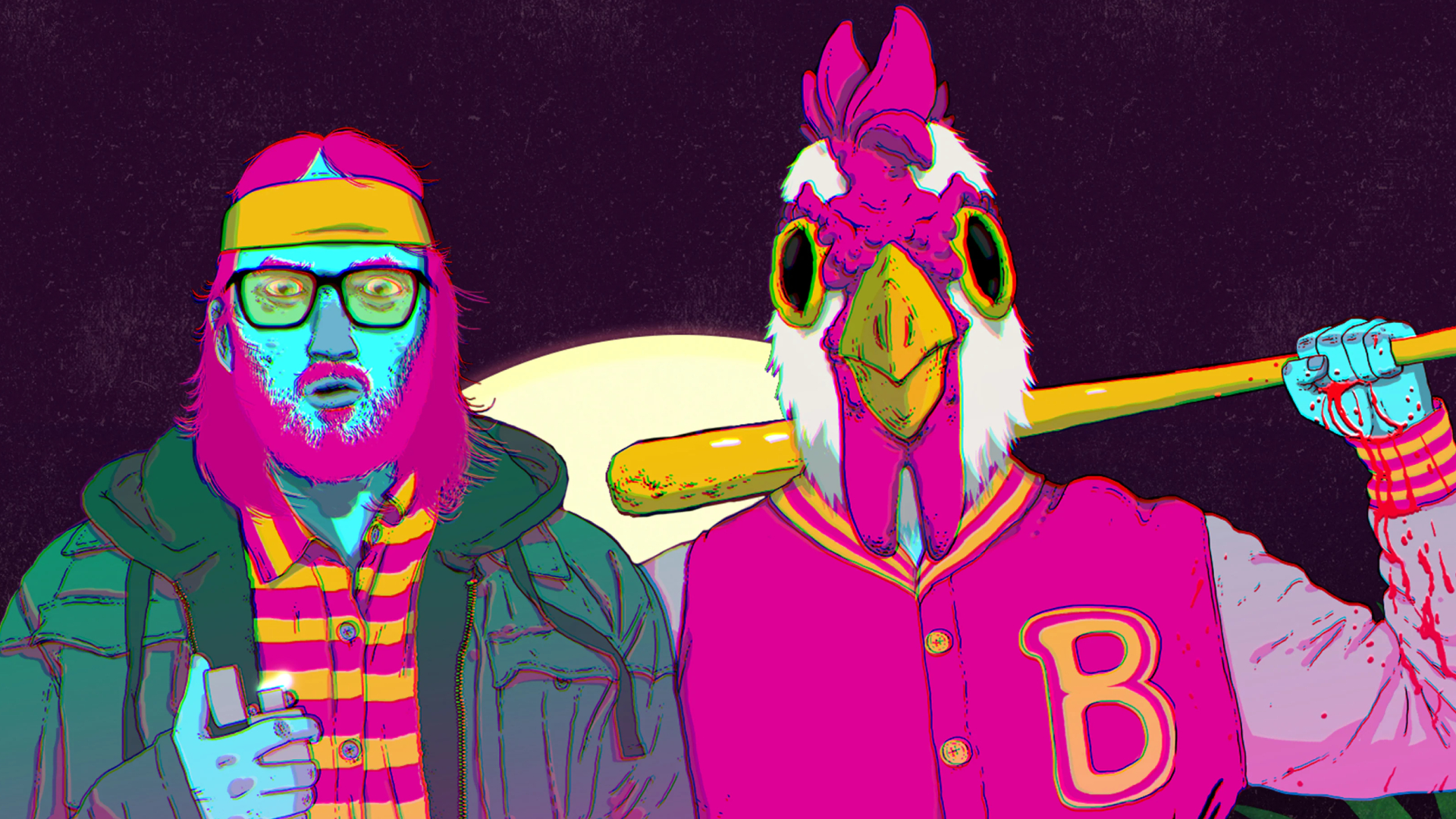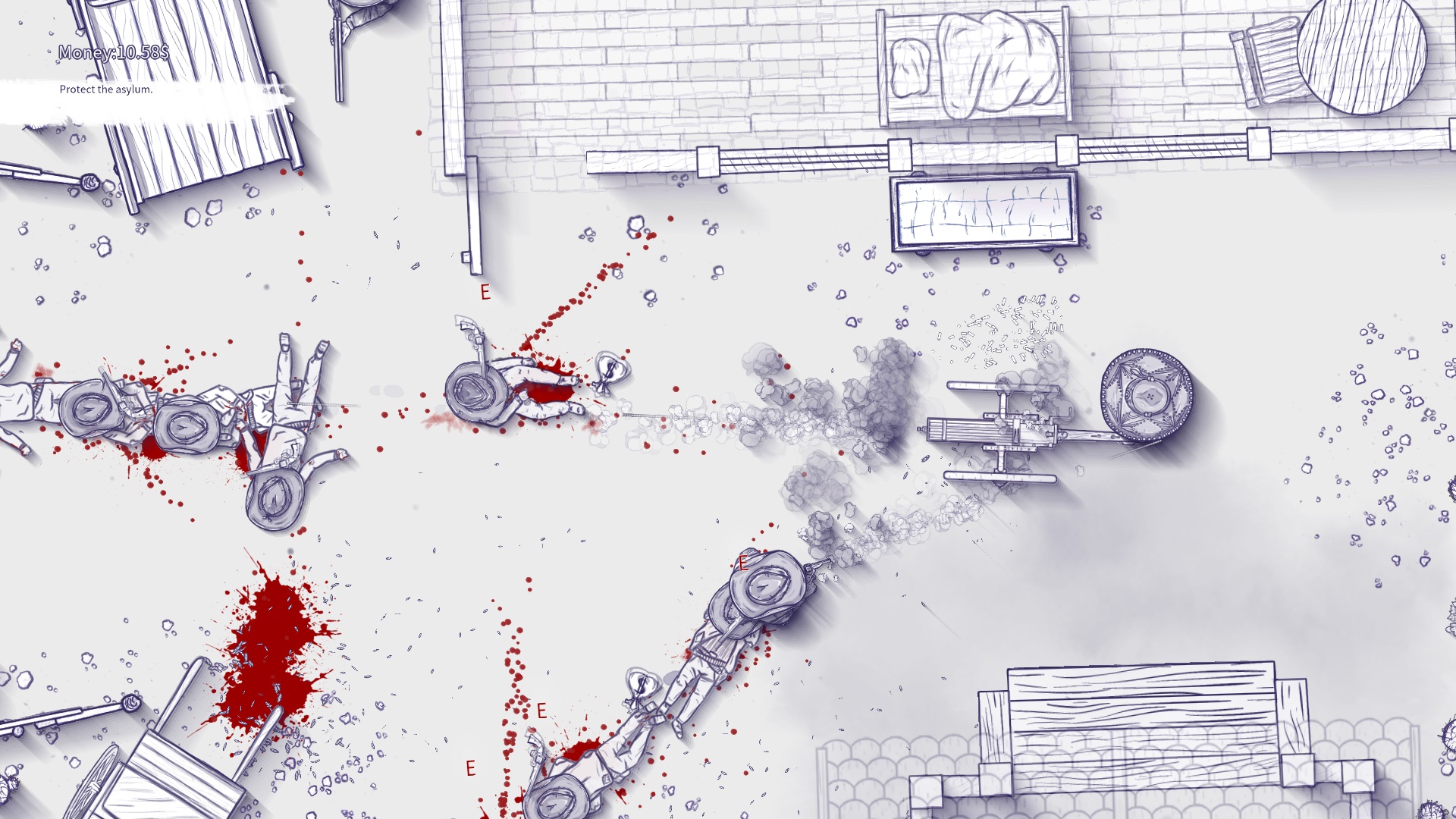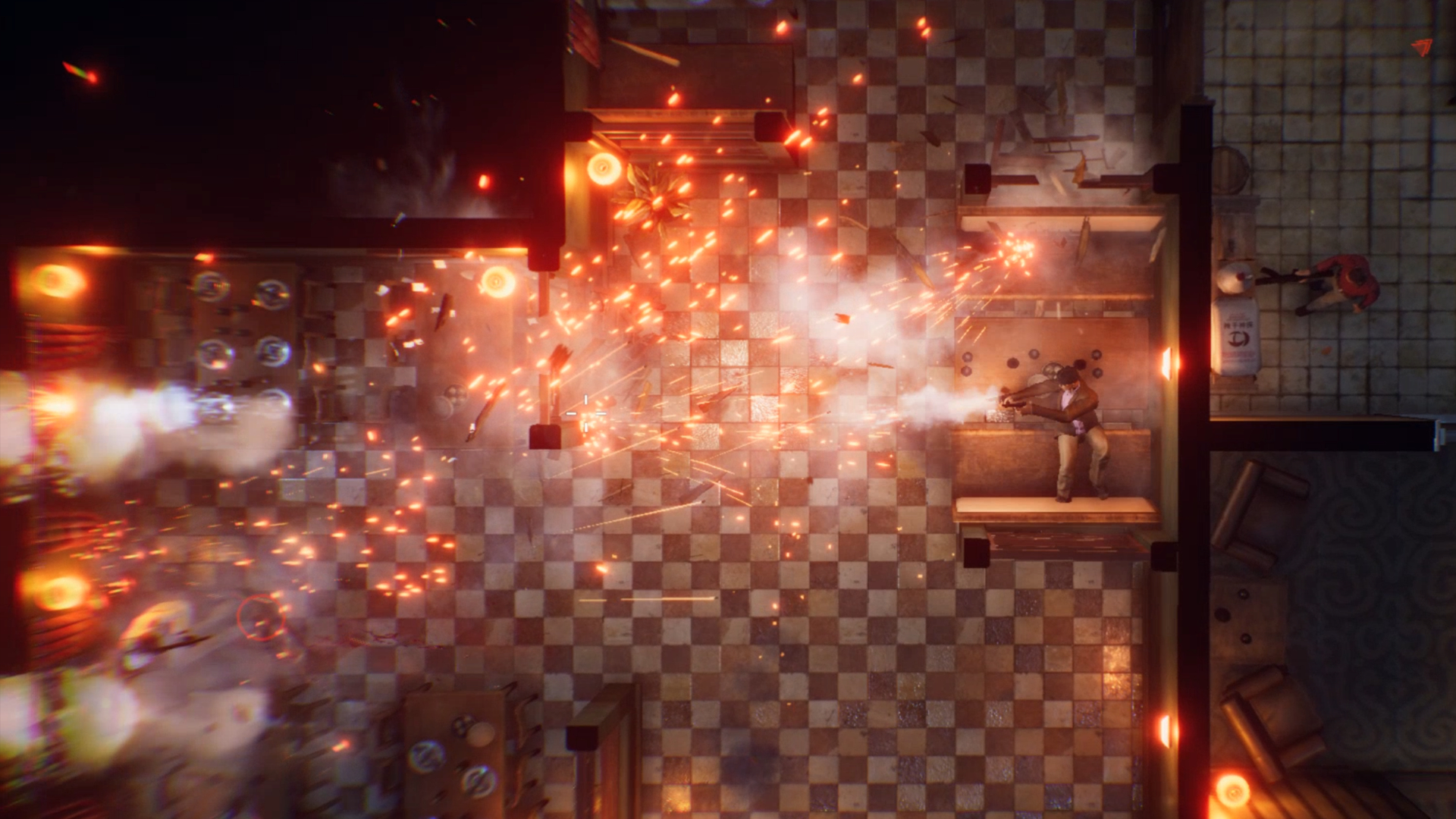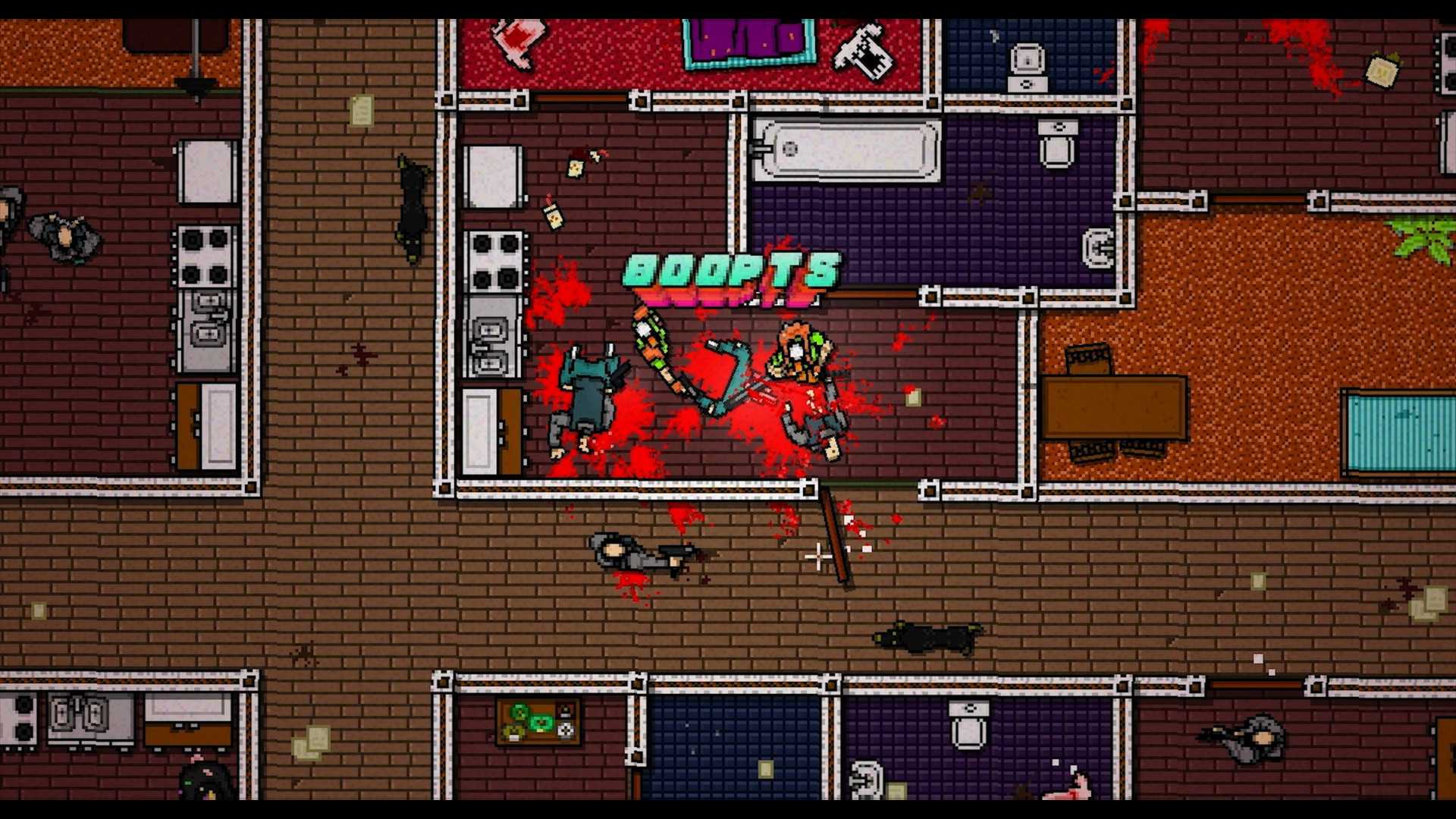Over 10 years later, Hotline Miami remains the indie games gold standard
It’s on the house

Hotline Miami is my favorite video game of all time. The ultra-violent top-down corridor shooter was released all the way back in 2012 by two-man team Dennaton. The team was comprised of Jonatan Söderström and Dennis Wedin who handled programming and artwork respectively.
Playable on Nintendo Switch, PS5, and Xbox Series X through the Hotline Miami Collection, Hotline Miami is an indie game with a tight vision. This means that the title thrives on its limitations; not only in terms of technology but also when it comes to restrictions forced upon you as a player. Mechanically, you’re given exactly the same chances of survival as everyone you face in this five-hour narrative; everything dies in one hit including you, meaning the cards are always stacked against you.
Much like how Jacket, the main protagonist, always has his back against the wall, you as a player must plan effectively and react quickly if you want to survive the various kill rooms. Death stalks around every corner. It could be anything from buckshot from a shotgun halfway across the screen, a dog you couldn’t see coming until it’s too late, or any number of melee mooks waiting to get the jump on you.
Hotline Miami is a game that gives you just enough to make every death fair
What Hotline Miami does better than any other indie game I’ve played, is deliver on that fine line between brutal action and puzzle-solving. If you run into an early game level such as Full House or Clean Hit without a plan of attack then you’re going to be cut down before you’ve even started. Chapters Five and Six are really where the training wheels come off and you’re expected to have a firm grip of the light stealth and firearm mechanics in contrast to the melee-focused earlier missions.
Hotline Miami is a game that gives you just enough to make every death fair. Every defeat feels demonstrably caused by player error and rarely comes from a source you cannot see. Its mixture of fast-paced gameplay, synth music, and top-down pixel graphics would go on to spawn many imitators which couldn’t quite live up to the success of the original. It's a trapping that Dennaton would fall into with the sequel Hotline Miami 2: Wrong Number also, albeit to a lesser extent.
They are the imitators

There has been no shortage of indie games that are heavily inspired by Hotline Miami. Given that Dennaton’s debut title went on to sell almost 4 million copies grossing over $22 million in Steam sales alone, it isn’t surprising that other development studios would want a piece of the action.
12 is Better than 6 is one of the more notable titles that followed in the wake of Hotline Miami in 2015. This top-down action game puts you in the shoes of an escaped slave in the old west setting and swaps out the techno music and pixel art for Spanish guitar and pen and paper art style respectively.
Sign up for breaking news, reviews, opinion, top tech deals, and more.
While I found it to be an enjoyable experience, I found myself frustrated at how often I died to a projectile fired by an off-screen enemy that I couldn’t see. In addition, the gunplay and movement controls felt far stiffer in comparison to Hotline Miami itself. Critics of the time seemed to agree with a middling Metacritic score of 59% and outlets such as God is a Geek cited the unfair difficulty spikes and frustrating deaths.

In 2019, The Hong Kong Massacre failed to capture the magic of Hotline Miami with its attempts at John Woo-inspired action set pieces and slow-motion gimmicks. It’s another title that I picked up wanting to scratch the sadistic Hotline itch.
Unfortunately, The Hong Kong Massacre didn’t quite do it for me, either. Developed by Untold Tales, the shooter got the look and feel right with the same top-down shooting and brutal difficulty, but lacked the fulfilling pace and flow of Dennaton’s original outing. The Hong Kong Massacre’s critical reception reflects this, racking up a meager 56% on Metacritic.
Unfortunately, The Hong Kong Massacre didn’t quite do it for me, either
Even in 2023, over 10 years since the release of the original Hotline Miami, I’m still seeing indie games that wear this inspiration on their sleeves. Enter The Zebra Man, a successfully crowdfunded top-down action game with pixel art graphics and animal masks worn when committing murders. The comparisons are unavoidable, as both games could quickly be mistaken for one another at first glance, especially since Hotline Miami 2: Wrong Number features Corey, a character who wears a zebra mask.

From what I’ve seen from the demo of The Zebra Man, it seems promising but offers little to distinguish itself from the original Hotline Miami outside of its more tongue-in-cheek tone. It’s so far presented in black and white and uses hearts to measure the player’s hit points instead of being one-hit-one-kill. Judging by the slither of gameplay available, the title suffers from the usual problem that often plagues Hotline Miami imitators: namely damage from unseen enemies who hide off-screen or around corners.
Do you like hurting other people?

After a recent replay of Hotline Miami 2: Wrong Number, I’ve noticed that the approach differed wildly from the original. The levels are so open that gunplay is usually preferable to melee, and being shot dead from miles across the screen is a common occurrence. It requires a completely different playstyle from the original. This goes some way to explaining Wrong Number’s colder critical reception, despite it also being up there as one of my favorite games of all time.
No other game in this sub-genre has got it right in quite the same way as the original
Though, I’ve only scratched the surface of the many titles that take a leaf out of Dennaton’s book, there’s a key lesson here for developers who want to create a Hotline Miami-like of their own. The formula clearly works best when operating within a well-designed series of mechanical limitations. Smaller maps, tighter combat, and fast-paced trial-and-error combat are key, as bigger doesn’t always mean better.
No other game in this sub-genre has got it right in quite the same way as the original, however, by placing a premium on fluid controls and working within well-structured, limited levels, it's possible that another game may be able to come for Hotline Miami’s crown.

Formerly TechRadar Gaming's Hardware Editor, Aleksha McLoughlin is now a freelance writer and editor specializing in computing tech, video games, and E-commerce. As well as her many contributions to this site, you'll also find her work available on sister sites such as PC Gamer, GamesRadar, and Android Central. Additionally, more of her bylines can be found on Trusted Reviews, Dexerto, Expert Reviews, Techopedia, PC Guide, VideoGamer, and more.